The verdict: The 2017 Chevrolet Colorado ZR2 is an off-road beast with mid-size dimensions — a rarity among pickup trucks that’s ripe for a loyal following.
Versus the competition: The ZR2 is better off-road than its chief competitor, Toyota’s Tacoma TRD Pro. Shoppers will have to decide whether that’s enough to overcome a few pesky limitations.
We drove an extended-cab ZR2 at Cars.com's Chicago offices, and our sister site PickupTrucks.com tested the ZR2 in the Southern California desert against its archrival, the Toyota Tacoma TRD Pro. Our review focuses on the ZR2, but if you're looking for a broader take on all Colorado variants, read our soup-to-nuts review of the current Colorado here. The ZR2 is new for 2017; stack it up against other variants here, or compare the 2017 and 2016 Colorado here.
Exterior & Styling
With a 2-inch suspension lift, 3.5 inches' wider track and clipped bumpers below the headlights, the ZR2 bares its tires — 31-inch Goodyear Wrangler DuraTrac off-roaders — when viewed from the front. Gone is the lower air dam that shaves ground clearance in other Colorado variants, even with the milder Z71 off-road package. An aluminum skid plate protects the ZR2's radiator and oil pan; another shield protects the transfer case. Steel tubes guard the lower sides, while the rear bumpers ditch the regular Colorado's outboard steps. You can even relocate the full-size spare tire from underneath the truck to an optional bed-mounted carrier to improve departure angles. All told, it's an impressive visual display — the sort that looks like an aftermarket kit, or something in the vein of Fiat Chrysler Automobiles' erstwhile Ram Runner conversion, more than a factory package.
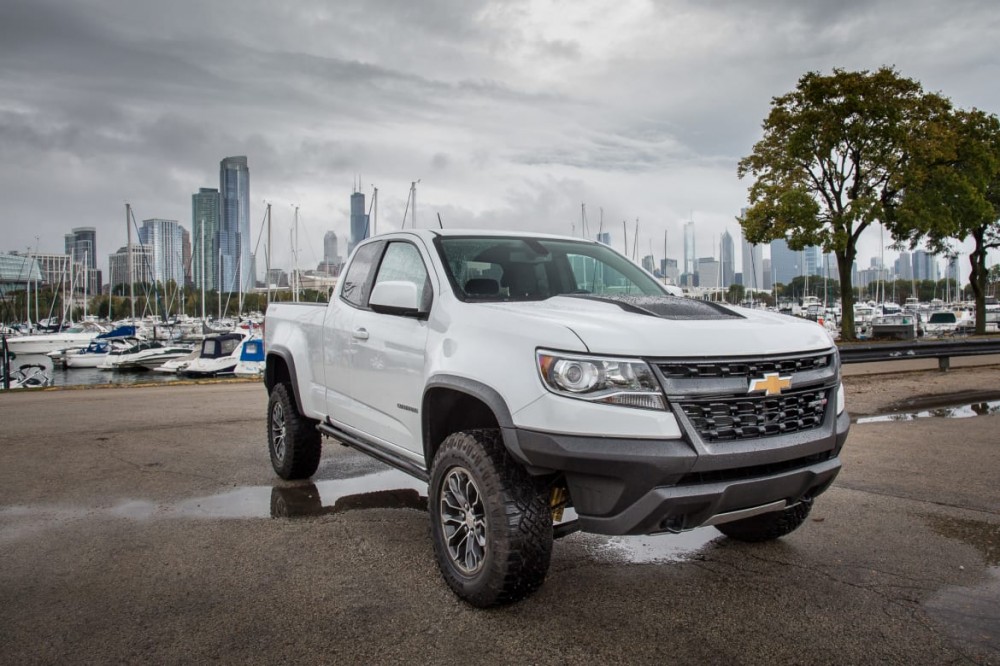
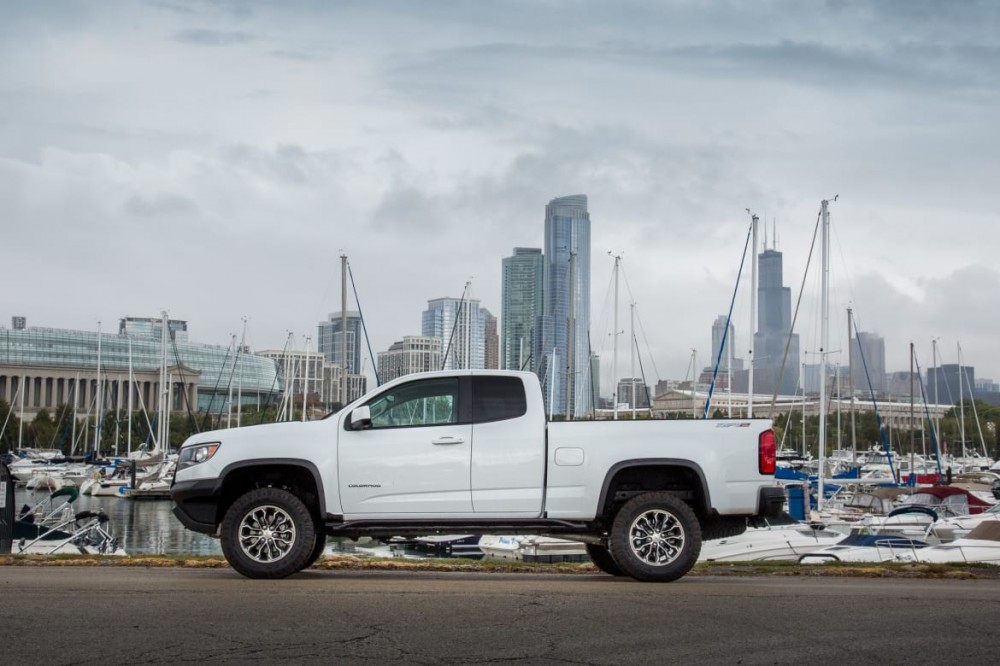
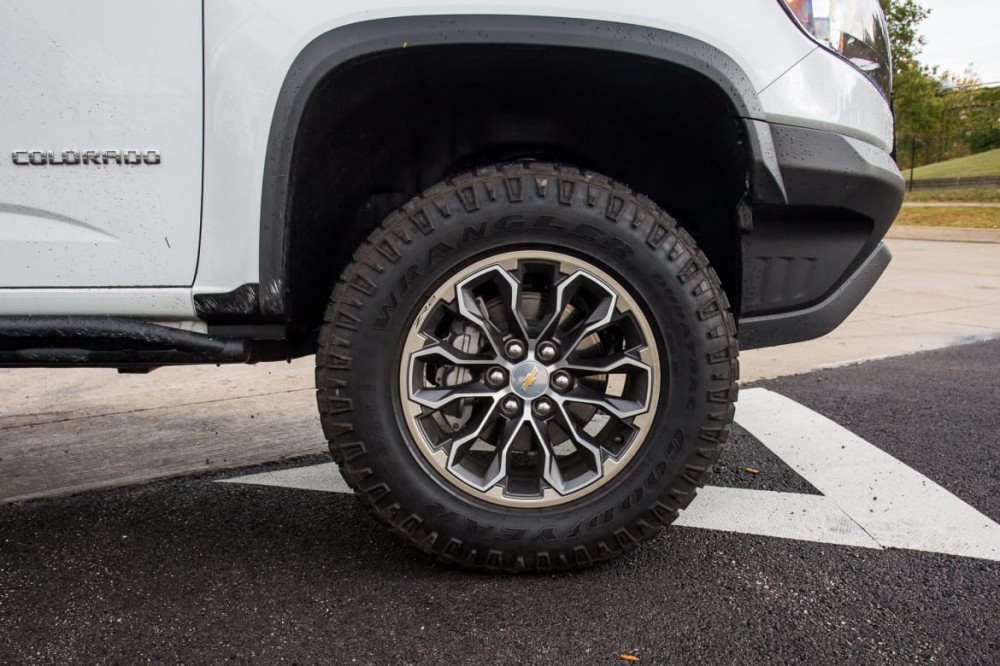
Of note, the Colorado ZR2's dimensions give it a smaller footprint than serious off-road trucks, which are mostly full-sizers (think Ford F-150 Raptor or Ram 1500 Rebel). Though it's a few inches wider than lesser Colorado variants, the ZR2 is some 5 to 10 inches narrower than the full-size off-roaders. It's a bit wider than the Tacoma TRD Pro, however.
Off-Road
The form has function. Developed at parent company GM's Arizona proving grounds, the ZR2's suspension employs softer tuning, taller coil springs in front and longer leaf springs in back. The big news is the sophisticated shock absorbers, which have three spool valves apiece to control compression and rebound for on- and off-road situations. It's the same supercar technology that once did time in the track-focused Camaro Z/28, and it works well. Our editors observed impressive wheel travel off-road, with outstanding cabin isolation in everything from rock crawls to sand- and dirt-road runs. Electronic locking differentials on both axles help, too, forcing equal rotation for tractionless wheels — a key provision when one or more of them leaves the ground. You can even lock the rear axle in two-wheel drive.
GM pegs ground clearance in the ZR2 at 8.9 inches, up 0.5 to 0.8 inch versus other variants, including the Z71. A dual-range, locking transfer case includes a four-wheel-drive Auto mode alongside the traditional rear-drive and four-wheel-drive high and low speeds. You also get hill descent control and Off-Road mode; the latter calibrates various systems to allow more wheel slip, which suits many off-road situations. Still, the whole of it is less electronic than the rival Tacoma TRD Pro, whose crawl control system modulates throttle and brakes to one of five low-speed settings while you only work the wheel.
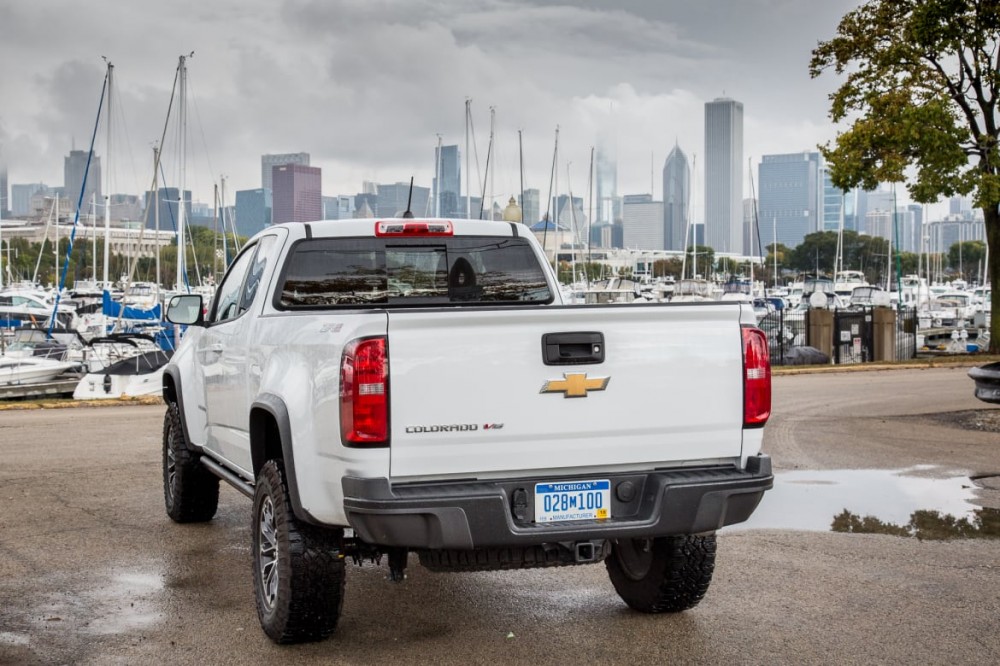
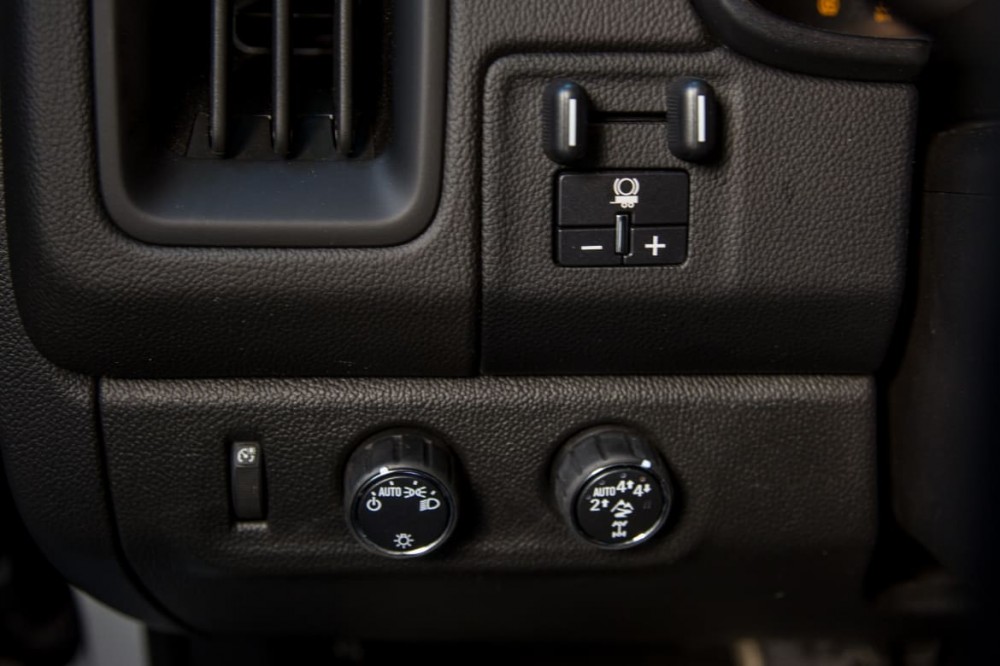
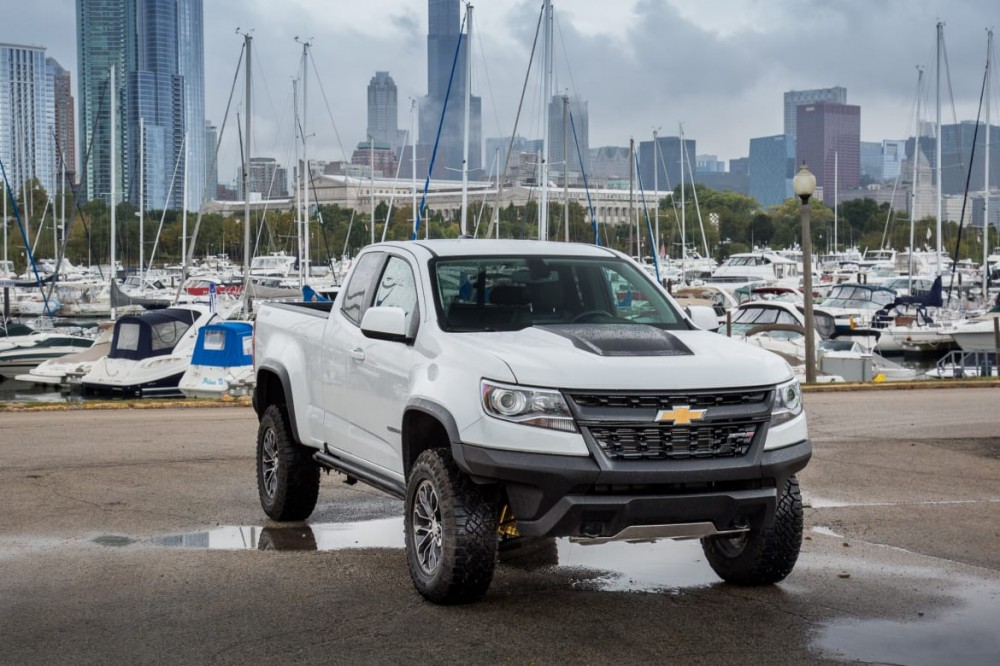
That's more important with the Tacoma's Atkinson-cycle V-6, which we found hard to modulate for appropriate power at low- and midrange rpm. By contrast, the ZR2 offers an optional 2.8-liter four-cylinder diesel with 181 horsepower and 369 pounds-feet of low-end torque — the latter perfect for off-road situations. The standard 3.6-liter gasoline V-6 (308 hp, 275 pounds-feet of torque) is no torque slouch, either. Both engines are competent in the low-rpm, high-load situations typical of off-roading.
On-Road
Back on the pavement, the V-6 boasts excellent accelerator response. The ZR2 moves in lockstep to your right foot, and its powertrain has enough low-end oomph to add speed even below 2,000 rpm. That's often where the engine dwells, as its sole transmission — an eight-speed automatic — delays kickdown until you're well into the gas pedal. Torque saves the day.
Typical of diesels, the Colorado's 2.8-liter example packs all its heat at low rpm. Accelerator response is tepid, however, and the engine runs out of breath once you get past midrange rpm. GM pairs the diesel with a six-speed automatic — a shame, as the eight-speed's extra ratios might have kept revs lower to linger in the engine's sweet spot more often.
The suspension absorbs expansion joints and broken tarmac with aplomb, though those shocks stop short of carlike isolation. We still noticed plenty of rear-axle shimmy at lower speeds, but the ZR2 settles down at higher speeds with good highway composure. The slow-ratio steering makes corners a deliberate, high-effort process, with immediate understeer if you try to take them fast. But body roll is unexpectedly limited; the ZR2 corners impressively flat.
It's the same supercar technology that once did time in the track-focused Camaro Z/28, and it works well.
Maximum towing capacity for the ZR2 is 5,000 pounds, short of both the regular Colorado's 7,700-pound max and the Tacoma TRD Pro's 6,400 pounds with a trailer package. The ZR2's 1,100-pound payload is also short of other Colorados' 1,574-pound max, but it's in line with the TRD Pro.
Other Details
Like other Colorado trims, the ZR2's interior has low-gloss finishes but plenty of hard, cheap plastics in areas like the upper doors, where your arms and elbows land. The 8-inch dashboard touchscreen — an upgrade over lesser 7- or 4.2-inch units — includes Apple CarPlay and Android Auto; a backup camera is standard. Our test car's optional navigation system had swipe and pinch map functionality, though neither action seemed particularly fast.
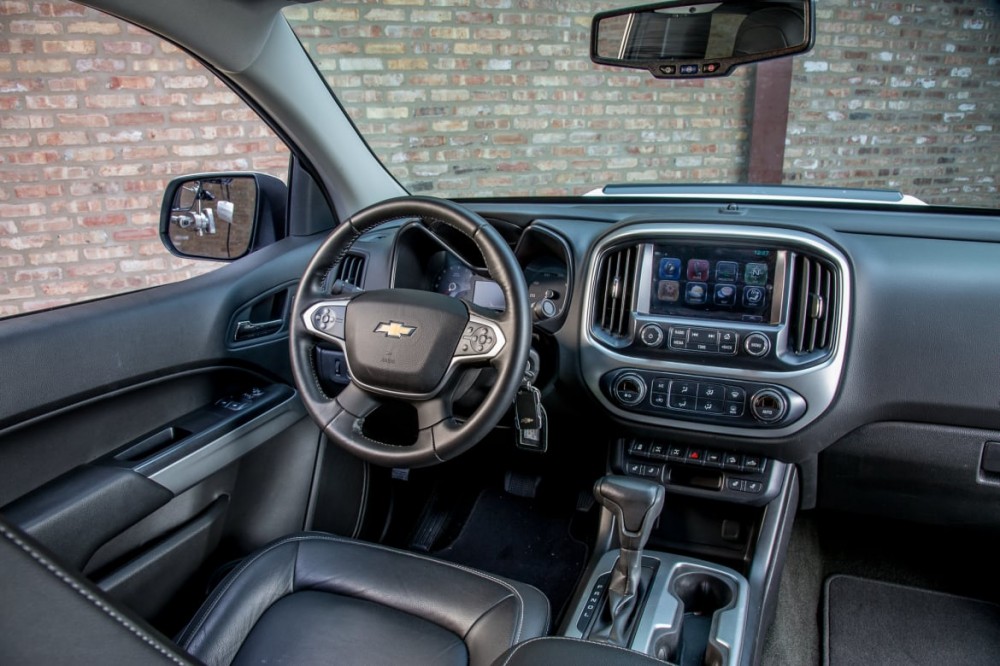
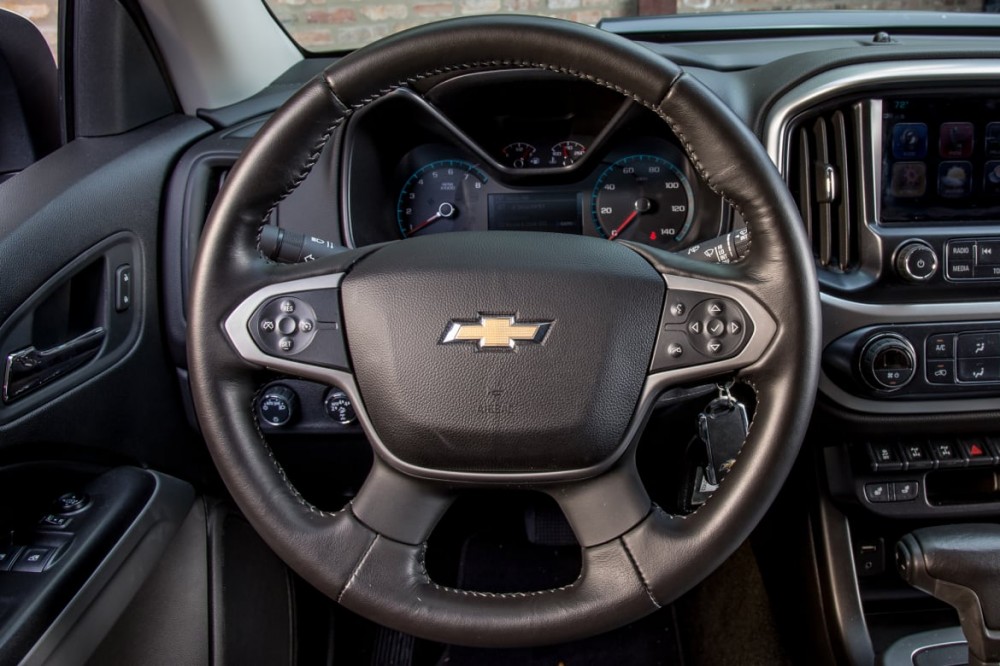
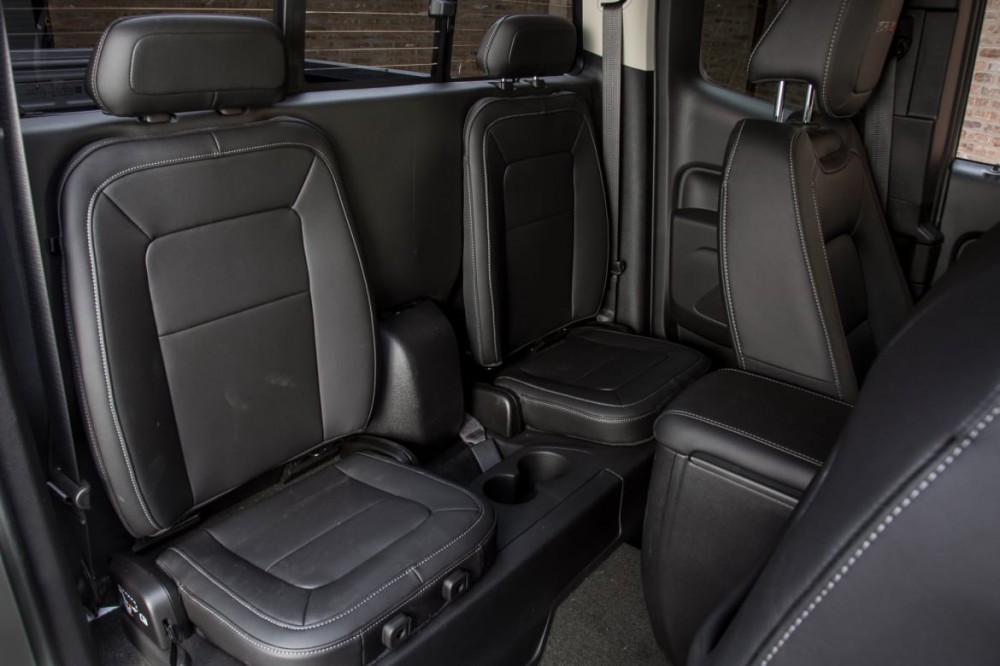
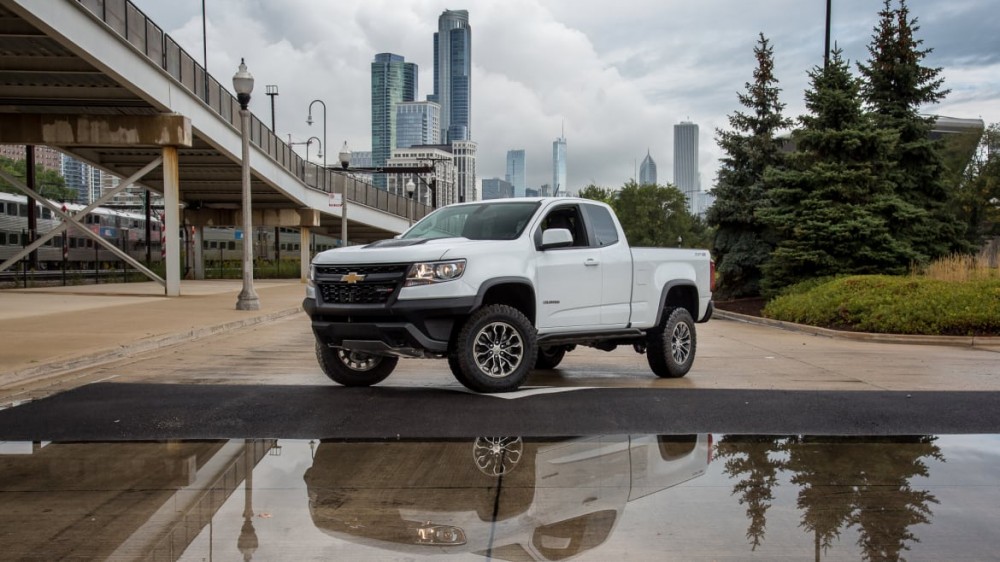
The ZR2 comes as an extended cab with a 6-foot-2 box or a crew cab with a 5-foot-2 box. Get the latter if you ever want to carry rear passengers: Bereft of 7.2 inches' rear legroom versus the crew, the extended cab's backseat is a squeeze for children, let alone adults. The body style also has concerning results in two of the five crash tests by the Insurance Institute for Highway Safety. The crew cab fared better, but both variants received poor marks on headlight performance. What's more, automatic emergency braking, a safety feature that's rare among mid-size pickup trucks but important, is unavailable in any Colorado.
In the Market
Chevrolet touts segment-leading off-road technology in the ZR2, whose price starts north of $40,000. It slots above the less hardcore Z71 to cap off the Colorado lineup, which starts in the low $20,000s for a rear-drive four-cylinder model. The ZR2 is unquestionably an off-road beast; it ultimately edged out the Tacoma TRD Pro in our off-road comparison. That should make the case for rock-crawling enthusiasts to consider this plucky Chevrolet, practicality and safety aside.








